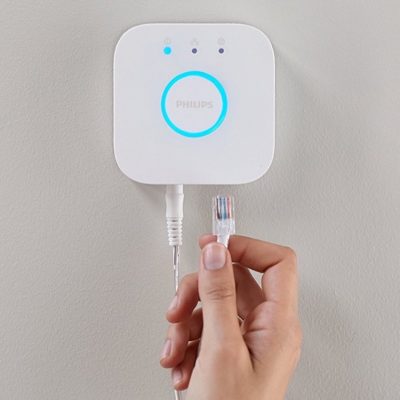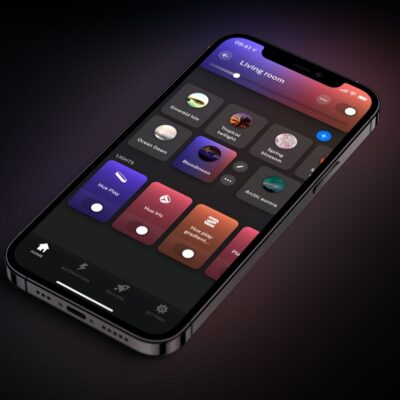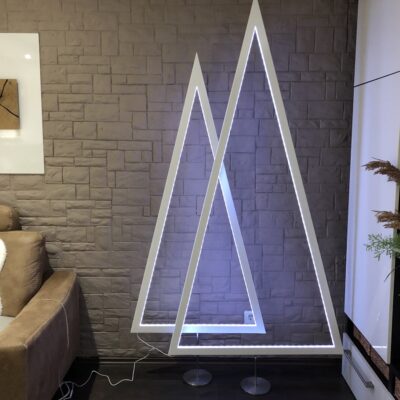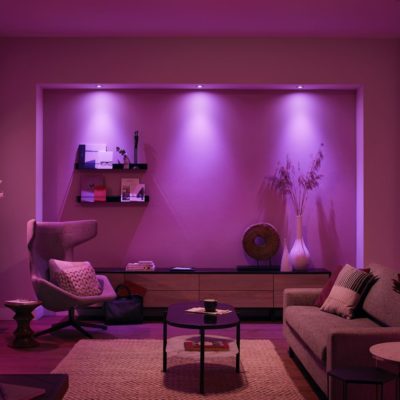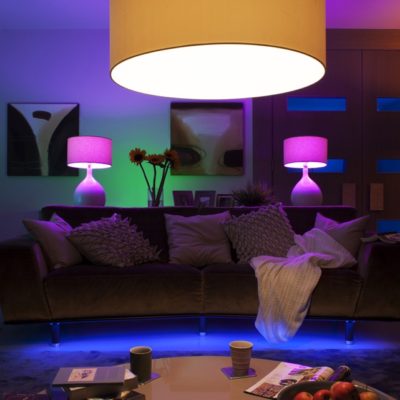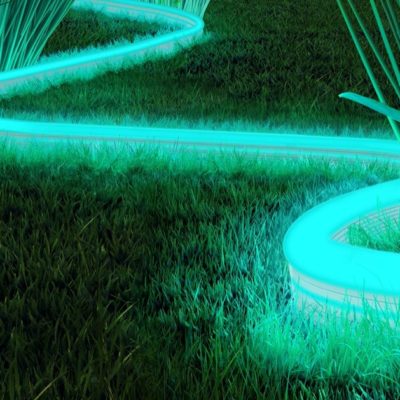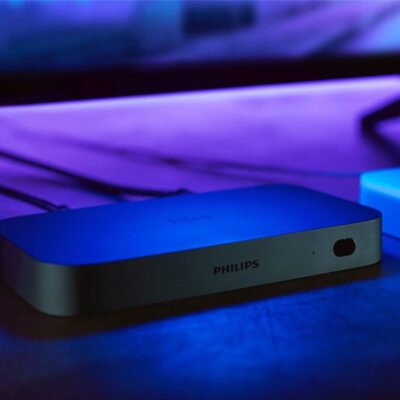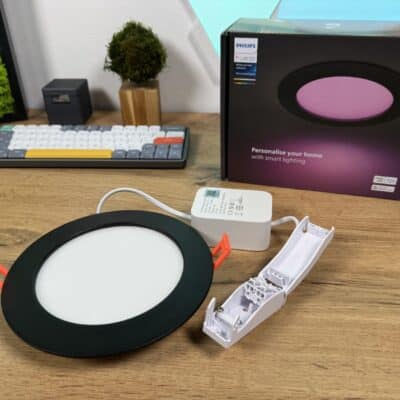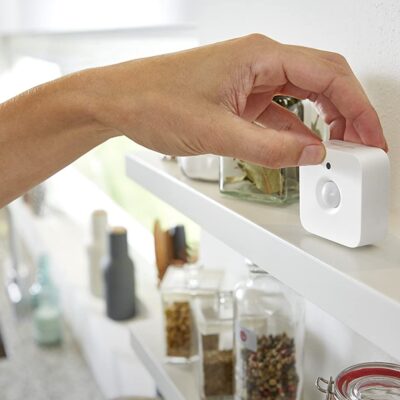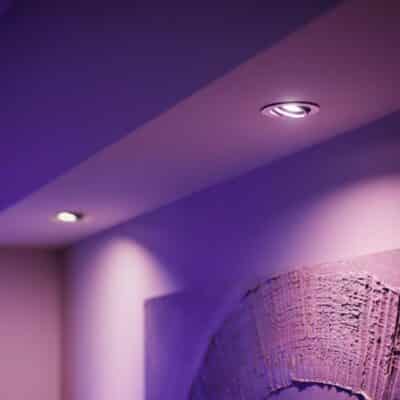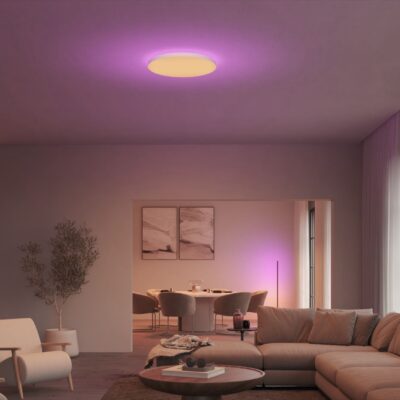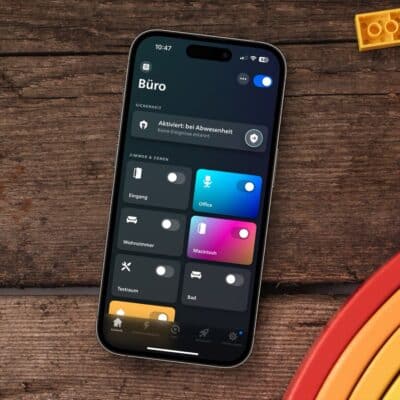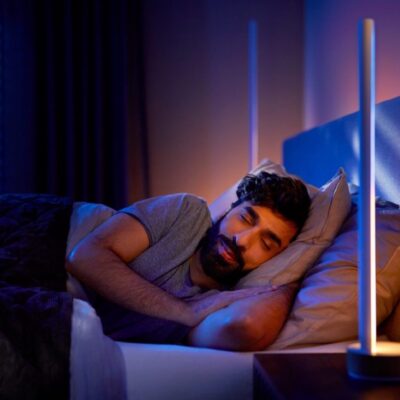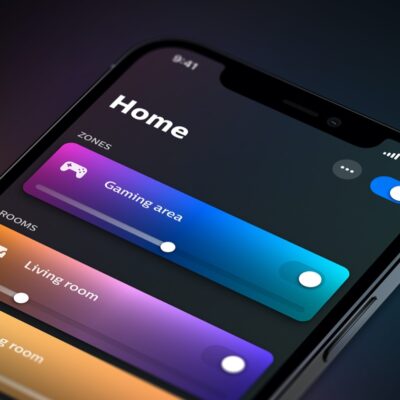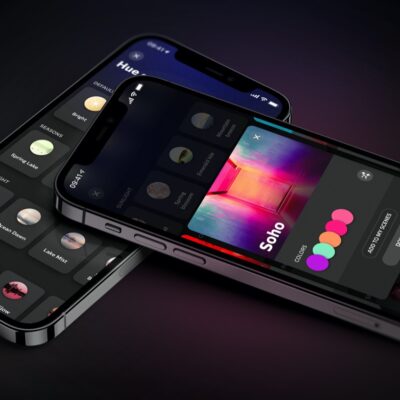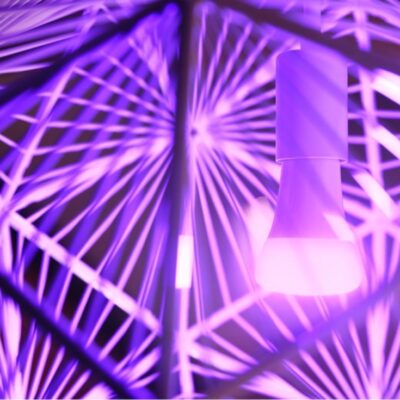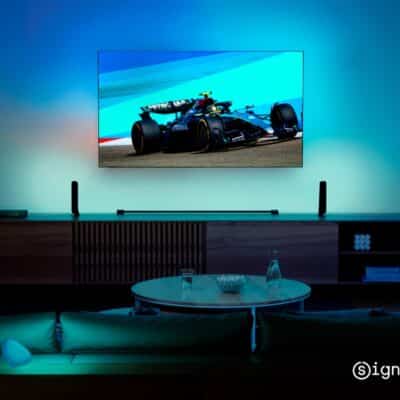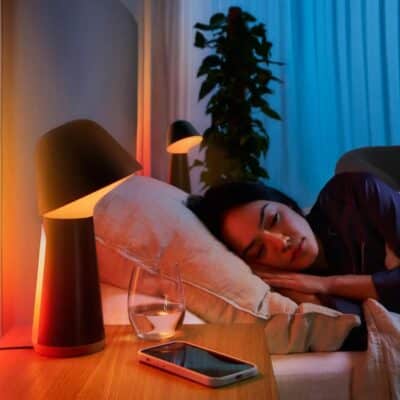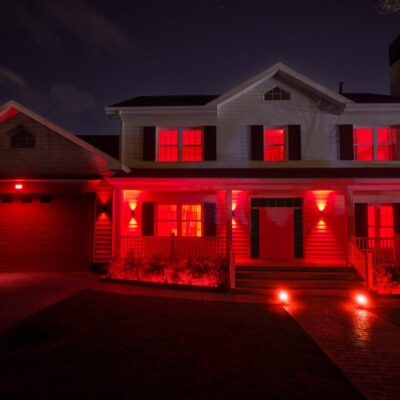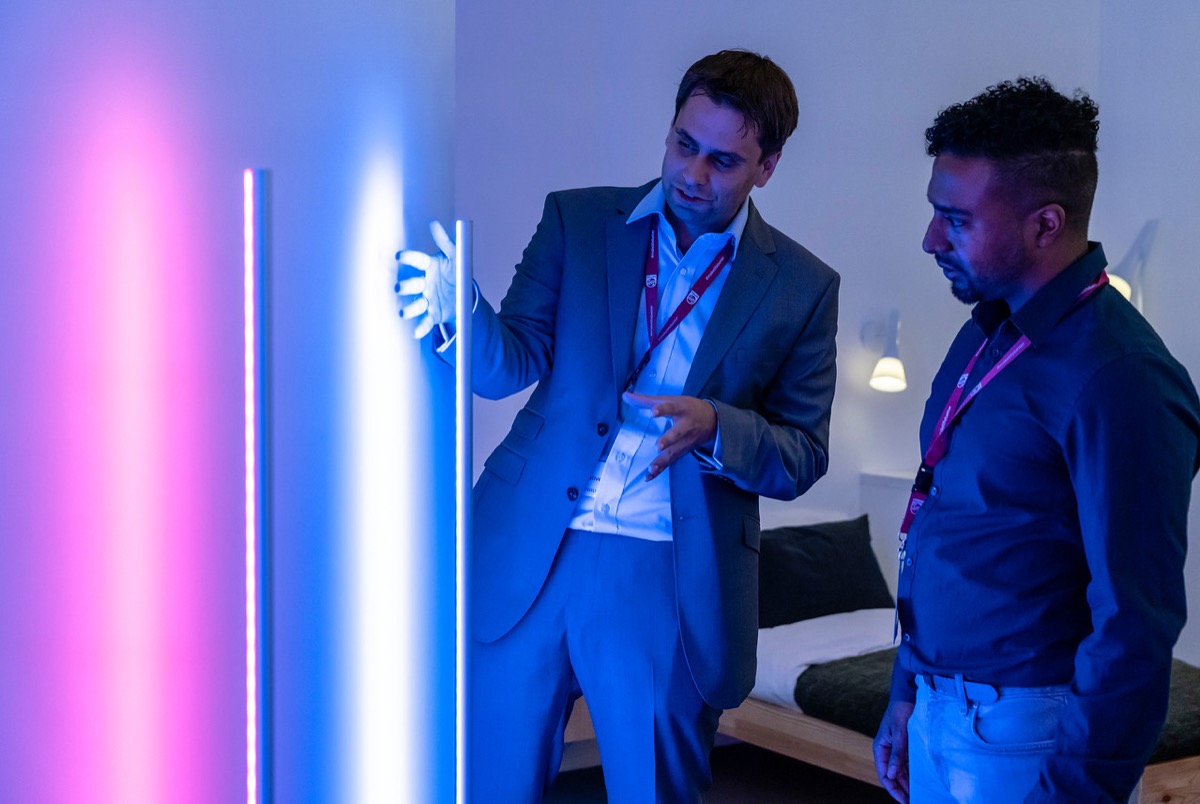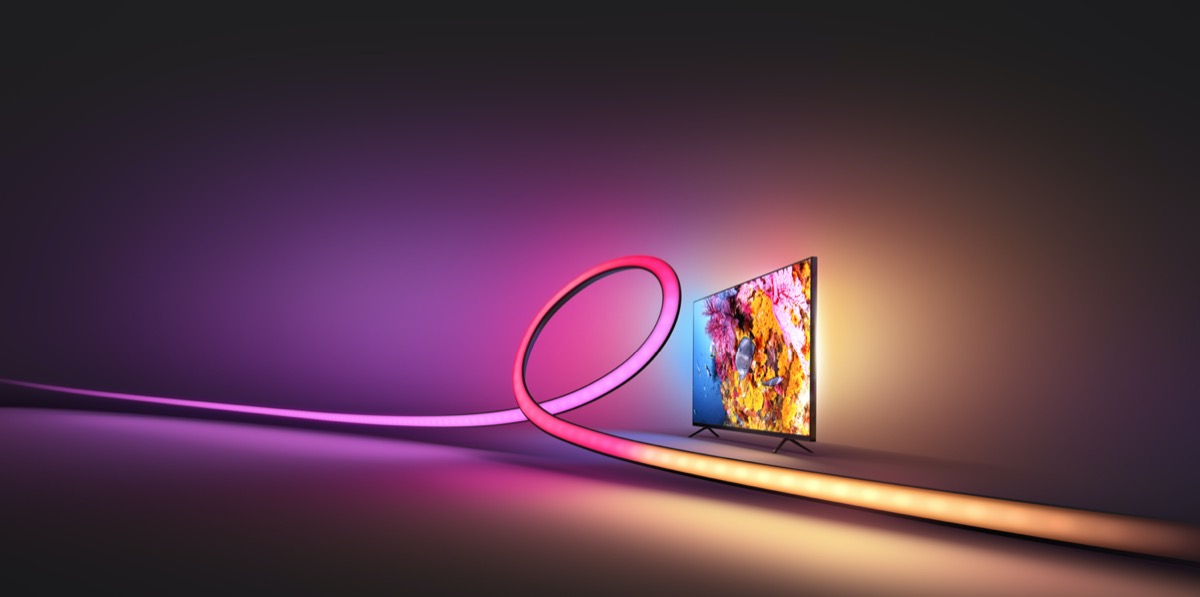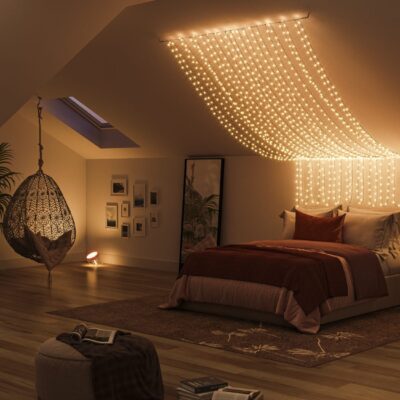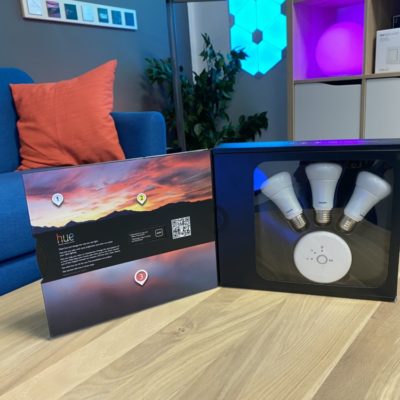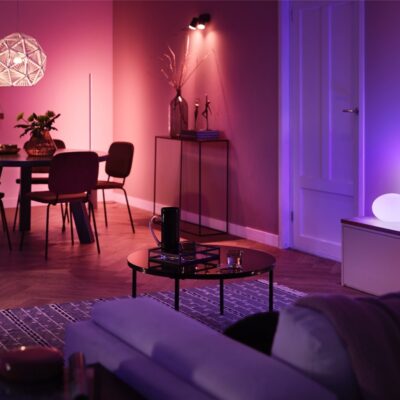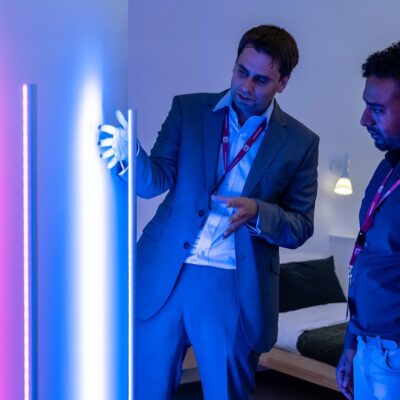Just over two months ago, the Philips Hue Play Gradient Lightstrip hit the market. It is the perfect partner for the HDMI Sync Box, but in truth there is much more to it. With the light strip that can display multiple colours at the same time, Philips Hue has developed a technology that can bring us a lot more joy in the future – even outside of entertainment mode with the Sync Box.
Already at the official product presentation, which was of course broadcast via live stream on the internet this year, Hue inventor George Yianni (cover image, left) announced that it will be possible to control the total of seven zones of the Gradient Lightstrip directly via the Hue app with a future software update.
How the Gradient Light Strip will work in the Hue app
“Of course, the Gradient Light Strip offers many more possibilities than are currently possible with the Hue app,” George Yianni assured me in a recent interview. “Our plan is that all the scenes you’ve already created can be extended to the Gradient Lightstrip, for example the popular Soho scene.”
They are also still working on implementing a user interface that goes beyond simple scene selection. In the end, it should be as easy to set the scene for the Gradient Lightstrip with seven different colours as it already is with the normal Hue lights. “You will see in the coming year how exactly this works and how beautiful it will look in the end.”
Gradient Lightstrip relies on extension of the ZigBee standard
But the development of the Gradient Lightstrip so far is already worth mentioning – because developing a multi-coloured light strip that adds a few bright colours to the TV screen is not something that can be done just like that. According to the Hue inventor, two important things were necessary for this.
First of all, the basis had to be laid with the Entertainment API and the HDMI Sync Box, which Philips Hue already made possible last year. Here, one could not rely on existing possibilities of ZigBee, but had to add own functions to the standard. “You can send commands via unicast very, very quickly to a single lamp. Or you can use a broadcast to send a specific command to the whole network,” explains Georg Yianni. The Hue Entertainment API uses the best of both ways: “We send a packet of commands as a unicast message to the entertainment area. There it is then distributed by one lamp to the other lamps via broadcast, but only within the entertainment area and not throughout the network.” A solution specially invented and patented by Philips Hue to circumvent the limitations of the ZigBee standard.
And further adjustments were also necessary for the Gradient Lightstrip itself. Here, a package of commands can contain even more individual elements; after all, the light strip behind the TV must display up to seven different colours simultaneously. “Previously, with Hue Entertainment, we talked about up to ten lights. Now it’s individual channels, which in and of themselves can contain multiple light information.”
ZigBee standard offers Philips Hue many possibilities
The ZigBee standard continues to serve as the basis for all communication. “That’s one of the great things about ZigBee. It is a very stable and reliable platform and offers manufacturers like us the possibility to add new functions and commands on top. This way, innovations like this are possible for us without having to get approval from other manufacturers.”
Philips Hue has already used such additional functions in the past, for example to be able to freely adjust the power-on behaviour of ZigBee light bulbs. Some of these developments will even be integrated into the ZigBee standard later on, such as the option for software updates for ZigBee light bulbs several years ago.
And who knows? Perhaps the gradient function will also become the new standard at some point. In any case, I am sure that in the coming years there will be some Philips Hue products that can display several colours at the same time. Because one thing became clear to me in a conversation with Hue inventor George Yianni: The Gradient Light Strip is only the beginning.
Note: This article contains affiliate links. We receive a commission for purchases via these links, which we use to finance this blog. The purchase price remains unchanged for you.


